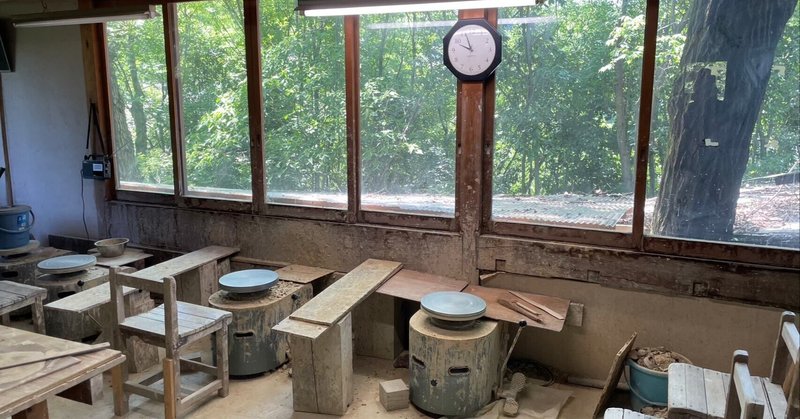
Be it life or art.
Yakitori and inferiority complex
Some time ago, I visited a kiln in Tajimi. For me, the word "kiln house" has a tense feeling of being a legend, a little bit high-status. I had a hard time stepping into the kiln because of my respect for the people who have connected the culture of setomono and pottery. This was because I felt inferior, as if I were an outsider who had not been exposed to the "real" history.
Let's go back to two months ago. when I was having a drink with a fellow potter. In the evening, when it was still a little light, we gathered at a yakitori restaurant that had been built in an old private house and was awesome a charcoal grill. After we had had our fill of excitement, the tsukune (skewered meatballs) were brought out. The generous amount of sauce and glossy egg yolk caught my attention, and just as I was about to reach for the skewer, I heard a voice from beyond my head: " I went to Tajimi before..." My hand stopped.
I want to go to the kiln. I could go alone, but it would take courage, and it would be great if I had three fellow travelers with me. Drunk, I set a date.
Came to Sumiyoshi Kiln Camp


Mr. Norihiko Ogiso welcomed us. While working as an artist, he also accepts students from Japan and other countries for training camps at his studio. After our visit, he plans to go to Taiwan and Korea to teach. He is over 80 years old and still active, and charming.
I want to do things I don't do everyday.
I had a strong yearning for Europe and had attended a Tortus Copenhagen workshop in Denmark. Later, after interacting with many people from overseas, I heard that many people from other countries go to Japan to study ceramics, which changed the way I see my feet, though in a conventional way.
As if pushed by my sense of inferiority, I began to look at Japan even after all this time. With this awareness, I was so looking forward to being allowed to make Shino ware in anagama in Tajimi, and I wanted to try something different, something I do not always do myself, something I cannot do, a clay I do not choose, a way of making, firing.
SHINO ware is a gentle milky white color with a slight reddish tinge. I made the bowls by hand without using an electric potter's wheel. Moxa clay" is originally from the Mino area, but unfortunately it is becoming scarce and expensive nowadays. The clay was a light pinkish color, not too sticky, with a crunchy taste, and soft to the touch. The soil has a gentle atmosphere like a cheek.
Forms, but feels like grasping the sky
The front is determined, good or bad, even though it is left to nature to shape it with its hands. The heart of the tea ceremony and the eyes of the tea ceremony exist in the absence of artifice, and the tea is created as an intention. We silently make, break down, and make again. It was the best time for me to work in the workshop after dinner, talking about trivial matters while getting tipsy, in order to finish the shaping process in only the two days.

Be it life, be it art.
While we were visiting the studio, several people came and made pottery and left. It is a rich scenery to have a place where people can make ceramics in their daily lives, and where people in the town can casually visit, even if they are not potters. I was reminded of Okakura Tenshin's "The Book of Tea," superimposed on the scene at the Sumiyoshi Kiln. It was folded and lined in several places. As someone who grew up buried in modern society, this is a book that I want to keep by my side forever, as if it will help me unearth my sense of aesthetics.
True beauty is found in the movement of the spirit in the face of imperfection, which seeks to perfect it in the mind.
Life and art are only alive when they have the potential for further growth.
I remember feeling reassured by the flatness with which it was wonderful prefaced, "Whether it be life or art."

On the way home, I regretted not having heard enough about the old days to him. I recall asking Mr. Ogiso while we were waiting for something. How can I continue to make ceramics for a long time?" He said, "Well, I think you have to meet the right person. I don't know if I gained anything in such a short time, but I am glad I went without fear. It will be many months before I can put the kiln into the anagama kiln. I will visit again then.





\読んでくれてありがとうございます!/ あなたのサポートはとても励みだし、作ることが楽しくなります。
